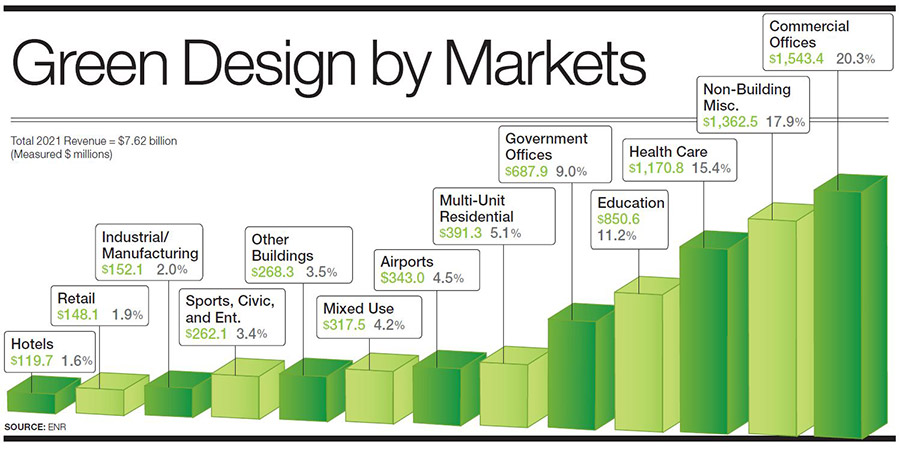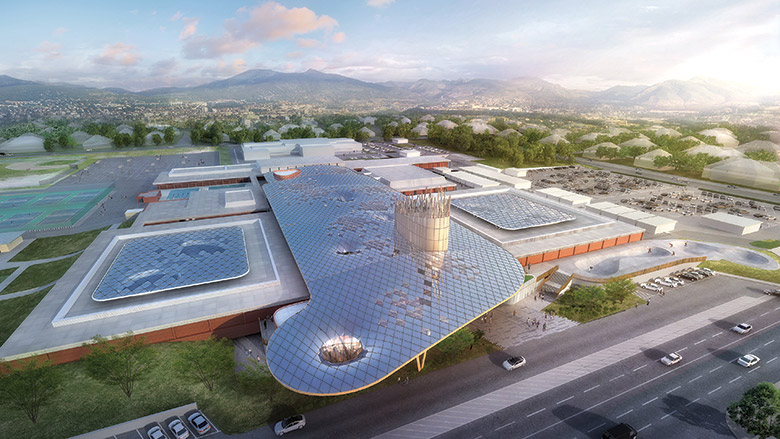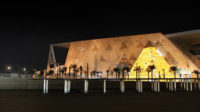The sustainable design and contracting market is fertile ground for innovation now more than ever, Top 100 firms share. With decarbonization incentives baked into recent federal spending packages such as the CHIPS and Science Act, Inflation Reduction Act and the Bipartisan Infrastructure Law, many owners across industrial and infrastructure sectors now have the wherewithal to think green.
But when it comes to the buildings sector, Top 100 firms say occupant health and wellness standards are requiring owners to think even greener. After the COVID-19 pandemic pushed many employees away from offices and shared spaces, many owners now seek to bring them back with third-party sustainability certifications that focus on how buildings can keep people healthy.
Related Links:
ENR 2022 Top 100 Green Buildings Design Firms
ENR 2022 Top 100 Green Building Contractors
View complete 2022 list, with full market analysis
(Subscription Required)
Growing Green
As HOK’s Komal Kotwal explains, the COVID-19 crisis has only “reinforced the link between the built environment and human health.” Contractors and designers specializing in sustainability have “long understood this connection,” says the sustainable design leader for health, well-being and equity at the New York City-based design firm.
“The pandemic served as an accelerator for action,” she adds. As employees return to the office space, “integrating many of these sustainable design goals and strategies has become a ‘need to have’ as opposed to a nice to have.”
According to Kotwal, these strategies include standards addressed in WELL Building and Fitwel certifications for metrics such as indoor air quality with high-performance ventilation and filtration systems (MERV-13 and MERV-14), as well as qualitative strategies to connect employees to nature in restorative indoor-outdoor spaces.
As green continues to go mainstream, implementing occupant health and well-being standards often go hand-in-hand with communicating corporate values, says Kotwal. “Third-party verified certifications are becoming an integral part of the strategy,” she says. HOK is ranked No. 4 on the Top 100 green design firms list for the second consecutive year.
Each year on the Green Markets survey, ENR asks firms for their subjective assessment of how much their client’s interest in sustainable construction has changed over the past year. Firms are asked to express that interest as a percentage. Overall, firms reported a 17.86% increase on this year’s survey, a significant bump from the last two readings. The equivalent number was 9.21% last year and 9.27% two years ago. Design firms report a higher level of interest, with a 22.43% increase compared to contractors at 12.01%.

Prioritizing Performance
Revenue from projects registered as actively seeking certification from third-party ratings groups under sustainable-design standards, such as the U.S. Green Building Council’s Leadership in Energy and Environmental Design (LEED) standards, rebounded for Top 100 design and contractors in 2021, up 18.9% and 6.7%, respectively. However, Top 100 firms say owners are digging deeper into sustainability to focus on performance-based outcomes beyond just pursuing certification.
For Top 100 contractors, most of the reported growth was seen among the largest firms. Collectively, this year’s top 10 contracting firms reported $4.54 billion more revenue in 2021 than in 2020, accounting for 96.6% of the total revenue growth for the list. The top 10 share of overall list revenue also rose to 50.9% last year, from 48.6% in 2020. Median revenue for Top 100 contractors fell to $258.5 million this year, from $307.29 million last year. Among firms outside the top 10 who filed both this year and last, 52.5% had less green revenue this year than the previous year.
Revenue growth for the Top 100 design firms was more evenly spread, with 61.4% of firms that filed surveys last year increasing their sustainable design revenue. Median revenue for design firms rose 8.73%, to $21.3 million. The top 10 firms accounted for only 49.4% of overall design revenue growth.
“We are seeing more clients, beyond those pursuing full green building certifications, who expect sustainable strategies to be incorporated into their projects,”explains Jackie Mustakas, sustainability manager at Birmingham, Ala.-based Robins & Morton. Even with cost escalation and supply chain challenges, “clients are looking for sustainability in design and construction and their internal operations,” she says.







Post a comment to this article
Report Abusive Comment